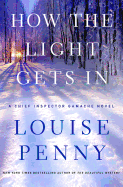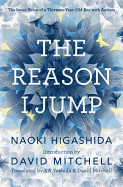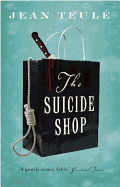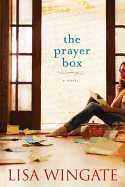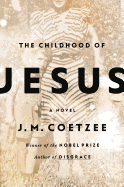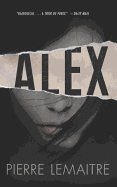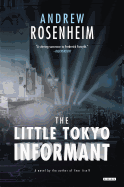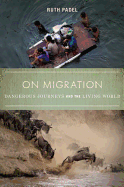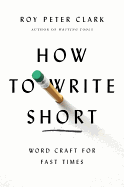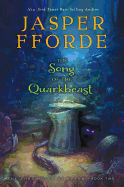Tuesday, September 3, 2013
Abuelita and Abuelito, Dedushka and Babushka, Obaachan and Ojiichan--whatever children may call them, it's their day: Grandparents Day, this Sunday, September 8. What better way to unite grandparents and children than with a good book? Here are a few old and new favorites to celebrate.
 Our Grandparents: A Global Album by Maya Ajmera, Sheila Kinkade and Cynthia Pon (Charlesbridge) features photographs of families around the world and suggests activities for readers to do with their grandparents. A trio of stories about three families--one white, one interracial, one Asian American--in the Caldecott Honor book More, More, More, Said the Baby by Vera Williams (Greenwillow) exudes the joy of a new baby, showered with affection. My Abuelita by Tony Johnston, illustrated by Yuyi Morales (Houghton Mifflin), unspools as a detective story sprinkled with Spanish words, as the boy narrator hints at Abuelita's profession (she's a storyteller).
Our Grandparents: A Global Album by Maya Ajmera, Sheila Kinkade and Cynthia Pon (Charlesbridge) features photographs of families around the world and suggests activities for readers to do with their grandparents. A trio of stories about three families--one white, one interracial, one Asian American--in the Caldecott Honor book More, More, More, Said the Baby by Vera Williams (Greenwillow) exudes the joy of a new baby, showered with affection. My Abuelita by Tony Johnston, illustrated by Yuyi Morales (Houghton Mifflin), unspools as a detective story sprinkled with Spanish words, as the boy narrator hints at Abuelita's profession (she's a storyteller).
Childtimes: A Three-Generation Memoir by Eloise Greenfield, illustrated by Jerry Pinkney (HarperCollins), with its scrapbook feel, family photographs and moments of history in one African American family, may well prompt grandparents to pull out their own photo albums. Grandmothers are the saving grace in Kevin Henkes's Newbery Honor book Olive's Ocean (Greenwillow), Cynthia Voigt's Newbery Medal–winning Dicey's Song (part of the Tillerman Cycle, Atheneum) and in R.J. Palacio's Wonder (Knopf). In The Thing About Luck by Cynthia Kadohata (Atheneum), narrator Summer grows to appreciate her grandparents' wisdom over the course of the Midwest harvest season.
For a rollicking good time, Frog Trouble by Sandra Boynton (Workman) will get children and grandparents up on their feet, singing with the CD and songbook, and dancing the Alligator Stroll. And The Song of the Quarkbeast by Jasper Fforde (Houghton Mifflin Harcourt) makes a terrific read-aloud for grandparents to share with grandchildren of all ages (both reviewed below). --Jennifer M. Brown, children's editor, Shelf Awareness
The Suicide Shop
by Jean Teule, transl. by Sue Dyson
For readers feeling overwhelmed by the influx of dystopian- and apocalyptic-themed entertainment, Jean Teulé's The Suicide Shop, first published in France in 2006, will hit the spot.
Environmental and economic chaos have wrecked the Earth. In this sad new world, suicide rates soar. For proper equipment and professional advice, many of the would-be dead turn to the Suicide Shop. (Its motto: "Has your life been a failure? Let's make your death a success.") The Tuvache family has run the shop for generations, bemoaning that their commitment to helping others choose and carry out their dream deaths dooms them to living long, depressed lives.
Monsieur and Madame Tuvache assist customers in selecting nooses, poisons and seppuku trappings by day and read their children bedtime stories about doomed lovers at night. Their daughter is convinced of her own ugliness and uselessness; their oldest son bandages his head against perpetual migraines while designing a suicide-themed amusement park. They're the ideal purveyors of death, at least until Alan is born.
Alan, the third Tuvache child, exhibits a disturbing tendency toward smiling. As Alan grows up, he continues to show unmistakable signs of happiness and optimism: laughing, joking, singing silly songs and, worst of all, trying to convince customers that life is worth living.
While more sensitive readers may not find Teulé's irreverent humor appealing, those who like their comedy on the dark and ludicrous side will find much to tickle their funny bones. This snide, hilarious affirmation of life is to die for. --Jaclyn Fulwood, youth services manager at Latah County Library District and blogger at Infinite Reads
Discover: Quirky and hilarious, this dark fable about a future in which a suicide boutique flourishes until the proprietors give birth to an optimistic son affirms the joys of living.
The Prayer Box
by Lisa Wingate
Hatteras Island is a vacation destination on the Outer Banks off the North Carolina coast. For 33-year-old Tandi Jo Reese, however, it becomes a place of refuge and healing after she and her two children flee their Dallas home to hide from a destructive, dangerous past. The three are offered dwelling in a rental home on the property of 91-year-old Iola Anne Poole. When Iola dies, the pastor of the local church enlists Tandi to clean out Iola's dilapidated Victorian house.
While sorting through Iola's cluttered personal belongings, Tandi discovers 81 beautifully crafted boxes--prayer boxes--Iola kept over the course of her lifetime. These boxes are filled with scraps of paper: heartfelt, personal notes written to a Higher Power, in which Iola shared her hopes and fears in navigating the challenges and joys of her humble, solitary life. The depth and honesty of each message paints a surprisingly fuller portrait of Iola's remarkable life, and this empowers Tandi to begin her own journey of self-discovery, assessing the hardships and mistakes of her past. She comes to embrace the idea that "some of the best things in life come out of the worst."
As in Lisa Wingate's other Christian-themed novels (Tending Roses et al.), faith and wholesomeness infuse the narrative of The Prayer Box. A warm, small-town feel and a cast of well-developed characters and subplots round out this richly woven story about the power of providence, grace and redemption. --Kathleen Gerard, blogger at Reading Between the Lines
Discover: The lives of two women, separated by generations, intersect over the discovery of 81 carefully kept prayer boxes.
Open Door
by Iosi Havilio, transl. by Beth Fowler
Iosi Havilio's Open Door is a strange, elliptical little novel written in a plainspoken prose that belies its haunting core. The unnamed narrator is a young Argentinian woman working in a veterinarian's office. The novel begins as she is visiting a man and a sick horse--both named Jaime--in a small town called Open Door. Later, the woman she has been living with in the city appears to commit suicide, and the narrator floats back to Open Door. There, she moves in with Jaime, whom she finds alternately appealing and mildly repulsive. She also meets a wild, charismatic girl named Eloisa who might be 15--or maybe 30.
She is called back to the city several times to determine whether the body of her roommate has been found. She thinks the officer in charge of the case may have fallen in love with her, but very little comes of it. A wheelchair-bound librarian helps her research the history of the "Open Door" psychiatric institutions that gave the town its name. She loves Jaime, then Eloisa, neither, both, but she stays. Each time the story seems to be headed in a particular direction it stalls, and the narrator slides sideways into another half-hearted endeavor.
Underneath the oddly sterile surface of Havilio's novel is a mesmerizing void. Are the characters really any different from the "loonies" living in the Open Door asylum? Are we? --Emma Page, intern at Shelf Awareness, bookseller at Island Books in Mercer Island, Wash.
Discover: This short, intense Argentinean novel is one of the first U.S. offerings from the "shamelessly literary" London publisher And Other Stories.
The Childhood of Jesus
by J.M. Coetzee
Though no one named Jesus appears in J.M. Coetzee's The Childhood of Jesus, there are parallels aplenty to the story of Jesus, Mary and Joseph, set in an unnamed Spanish-speaking country where the people are decent, well-intentioned, strangely satisfied, don't eat meat, don't fight and don't charge for services.
Five-year-old David, extremely bright but troubled, and his 50ish guardian, Simon, have just arrived by boat in the Relocation Center. They've come there to find the boy's mother, whose name has been lost at sea. Simon gets hired as a stevedore.
Too complicated and realistic to be an allegory, too multi-dimensional and idiosyncratic to be a fable, Coetzee's surreal philosophical discourse on childrearing and education still manages to remain human and frequently touching. Coetzee is known for his pessimism--his Booker Prize-winning Disgrace has one of the most depressing endings in modern fiction--but the world Simon finds himself in is surprisingly warm-hearted. The foreman at the docks not only minds David while his guardian works, he even loans them money. Impulsively, Simon decides that a wealthy young woman playing tennis is the boy's mother. He announces as much to her; more astonishing yet, she agrees to adopt the boy.
In this small, baffling riddle of a novel, where people arrive mysteriously by boat, washed clean of memory, to labor in a peaceful agrarian world, David grows more and more out of control. Running away from school, defying his teachers, he begins gathering doctors and hitchhikers like apostles and saying things like, "You must call me by my real name" and "Yo soy la verdad." What exactly Coetzee has in mind is anyone's guess, but just try to stop puzzling over this thought-provoking novel. --Nick DiMartino, Nick's Picks, University Book Store, Seattle, Wash.
Discover: In Nobel Prize-winner Coetzee's mysterious new novel, a five-year-old boy and his guardian go in search of the boy's mother in an unnamed Spanish-speaking utopia.
Alex
by Pierre Lemaitre, transl. by Frank Wynne
Alex begins like any number of other psychological thrillers: an attractive young woman is snatched off the streets of Paris by a strange man. He takes her to an abandoned warehouse and tells her he's going to watch her die. He puts her inside a small wooden crate--too narrow for her to lie flat, too shallow for her to sit up--and she quickly winds up "curled up on herself, almost into a ball." After several days of being given only water and dog food, Alex is in a weakened state. Rats, sensing a new prey, descend upon the helpless captive.
Pierre Lemaitre has several surprises in store for mystery fans, though, starting with the police investigator leading the investigation, Commandant Camille Verhoeven. Maybe it's not so unexpected that Camille doesn't want the case, that he's determined to have nothing to do with kidnappings--his wife, Irène, died after being abducted some time ago. And it's hardly a shock to find out that he's a tenacious detective who doesn't get along with many of his colleagues, especially superior officers. But you probably weren't expecting him to be 4'11", or a brilliant sketch artist--two traits he got from his mother, a painter who smoked throughout her pregnancy, stunting his growth in the womb.
Camille is irritable under the best of circumstances, but this case is particularly aggravating--at first, he and his fellow police officers don't even know who the victim is. With the bare minimum of clues, they're finally able to figure out the identity of the culprit, but then he throws himself off a bridge rather than let them take him into custody. And the pictures on his cell phone tell them what he's done to Alex, but not where she is.
That seems like it's a spoiler, but it's the least of the plot twists Lemaitre has prepared for us. As the search for Alex continues, Camille and his team uncover a much more disturbing web of crimes--many of which are recounted in details as grisly as the scenes in which Alex must face off against the increasingly hungry rats. It soon becomes clear that she's more than a helpless victim, but who is she, really? Does the truth about her past explain the abduction, or does it point to something more? "This girl," Camille tells his supervisor, Le Guen, "there's something not right about her." At the time, he doesn't know how right he is.
Lemaitre's sudden directional shifts will earn Alex comparisons to Gillian Flynn's Gone Girl, but the similarities only go so far. It might also be useful to think of Stieg Larsson's Millennium series, not least of all because of the horrors Alex endures. But while Larsson's novels were often contemptuous of regular law enforcement as a piece of a larger misogynist culture, Lemaitre is generally sympathetic toward his police. He lingers over the gruff camaraderie Camille shares with Le Guen--"they're like an old married couple, which is something of a no-win situation for two men pushing fifty, both of whom are single"--and their mutual distaste for the judicial magistrate who keeps sticking his nose into the case. ("At least we get to deal with him as an adult," Le Guen observes after one particularly annoying meeting. "Can you imagine what an irritating a**hole he must have been at school?")
Frank Wynne's translation moves the story along briskly as Lemaitre oscillates between Alex and Camille's points of view. Some particular nuances of the French judicial system are covered in an introductory note and glossary, so the narrative doesn't get bogged down in digressive explanations. Instead, Lemaitre uses those opportunities to delve into personality sketches and backstory revelations. While Camille and Alex may be the most vividly drawn characters in the novel, much of the secondary cast--especially Camille's colleagues--are granted distinctive flourishes that make them feel like actual partners in the investigation rather than additional set dressing.
Alex is the first Lemaitre novel to be translated into English, but a little research turns up the fact that it's actually the second about Camille, with another sequel already out in France. In this story alone, readers can feel the potential in these characters; just as any one of Ed McBain's 87th Precinct novels was the tip of an enormous narrative iceberg, Alex leaves us with the sense that there's much left to learn about Camille and his colleagues. Here's hoping we'll get the chance. --Ron Hogan
Mystery & Thriller
How the Light Gets In
by Louise Penny
How the Light Gets In is the ninth book in Louise Penny's acclaimed Inspector Gamache series. Following the disheartening events at the conclusion of The Beautiful Mystery, Québécois detective Armand Gamache struggles to preserve some whisper of integrity among the agents of the Sûreté's homicide department, while his former protégé spins helplessly out of control, sinking under the weight of resentment, fear and addiction. Unrelated cases involving the disappearance of an seemingly unremarkable old woman, and the apparent suicide of a young woman in possession of remarkable information, spiral into alignment, leading Gamache to a new understanding of the lies we tell ourselves and others.
As matters come to a head, Gamache marshals his forces, calling on the few colleagues he has left who may be trustworthy. Leaving a few strategically false trails, Gamache and his friends retreat to the small village of Three Pines for one last desperate attempt to root out the cancerous corruption at the heart of Quebec's government.
Over the course of her career, Penny has won practically every award that exists for mystery fiction, all richly deserved. She writes a quiet mystery, more introspection and character study than thriller, and delves into the deepest recesses of her characters with a clarity and intensity that is both painful and perversely soothing. Her plots are woven as deftly as characters, making this novel, like its predecessors, a joy to read. --Judie Evans, librarian
Discover: Louise Penny's superlative Canadian mystery series builds to a climactic confrontation between Inspector Gamache and his corrupt superiors.
The Little Tokyo Informant
by Andrew Rosenheim
Andrew Rosenheim introduced FBI agent Jimmy Nessheim in Fear Itself, a smart thriller with a 1930s milieu. For the sequel, The Little Tokyo Informant, Nessheim's in Los Angeles, and Rosenheim clearly enjoys dipping into the hot, sweaty, noir-ish atmosphere of Chandler and Hammett's Southern California.
The story takes place from September 1941 to March 1942, in Los Angeles and Washington, D.C. Nessheim has been assigned by J. Edgar Hoover to advise a film studio on FBI tactics for a "B" film called The Red Herring: "Make sure the studio makes the Bureau look good," he's told.
Along the way, Nessheim finds out about $50,000 wired by Soviet intelligence officers in New York to a Japanese bank in Los Angeles. He wants to talk with Billy Osaka, a small-time Japanese-American journalist who's been recruited to do some translating and help identify subversives who might be working for Japanese intelligence--but he's missing. He does find Billy's grandmother--only she's been murdered. Meanwhile, an assistant director at the Bureau, working leads in Washington, finds a dead State Department official. It looks like he was involved in the money transfer. Why?
Rosenheim deftly juggles all the pieces of a mystery set in a world on the cusp of war in a thriller that could point to nefarious goings on at the highest levels of the government. --Tom Lavoie, former publisher
Discover: A suspenseful, skillful espionage thriller set in the noir Los Angeles of the early 1940s.
Biography & Memoir
The Reason I Jump: The Inner Voice of a Thirteen-Year-Old Boy with Autism
by Naoki Higashida, transl. by K.A. Yoshida and David Mitchell
In a satisfying merging of talents, British novelist David Mitchell (Cloud Atlas) and his wife, K.A. Yoshida, have translated The Reason I Jump, Naoki Higashida's straightforward, heartfelt memoir of autism. Naoki composed the book when he was 13 years old on an unusual alphabet grid he uses to compensate for his limited ability to speak, answering questions everyone wants to ask of him and other autistic children, such as "Why don't you make eye contact when you're talking?" or "Why do you make a huge fuss over tiny mistakes?"
Mitchell and his wife are the parents of a boy who, like Naoki, has autism. "The Reason I Jump was a revelatory godsend," Mitchell writes in his introduction. "Reading it felt, as if for the first time, our own son was talking to us about what was happening inside his head, through Naoki's words." The questions Naoki answers are the titles of his brief chapters; in them, he writes of his feelings and experiences in direct and often poetic language, ending with a bit of advice. "To you who are helping us, please handle and approach our behavioral issues with a strong faith that they are definitely going to pass," he asks. "We'd like you to stick with it, and stick with us." While he's sometimes dismissive of the value of his opinions, Naoki's conclusions are undeniably credible. As he says, "True compassion is about not bruising the other person's self respect." --Cheryl Krocker McKeon, bookseller, Book Passage, San Francisco
Discover: This Japanese teen's memoir offers lessons in understanding--and not just for families of autistic children.
The Life and Poetry of Ted Kooser
by Mary K. Stillwell
Karl Shapiro's introduction to Ted Kooser's second collection, A Local Habitation & a Name (1974), contains a still perfect assessment of Kooser's poetry: "honesty and lucidity, the sharpness of focus" and "that mysterious quality of voice." With The Life and Poetry of Ted Kooser, Mary Stillwell--a former student of her subject as well as a fellow Nebraskan--has written a fine, authoritative first biography of the former U.S. Poet Laureate.
Though Iowan by birth, Kooser has spent most of his life in Nebraska, where, for years, he was employed in the same business as Wallace Stevens: insurance. So, at first, poetry was an avocation, not an academic career. He studied architecture at Iowa State but turned to English, teaching high school for a year before going to graduate school in Lincoln, where he worked with Shapiro. His first book, Official Entry Blank, foreshadows lifelong themes such as the language and expanse of the Great Prairie, already casting his idiomatic voice into favorite forms like the lyric and dramatic monologue.
Stillwell beautifully chronicles Kooser's close relationship with fellow Midwest writer Jim Harrison. When Kooser was chosen as poet laureate, she writes, he was "completely flummoxed," and worked hard to get his weekly poetry columns picked up by newspapers. This is a lovely book about a humble man's life. As he says in his memoir, Local Wonders, "This is the life, I have chosen." --Tom Lavoie, former publisher
Discover: The first comprehensive book on Poet Laureate and Pulitzer winner Kooser and his wise, lyrical and deceptively simple Midwestern prairie poetry.
Science
On Migration: Dangerous Journeys and the Living World
by Ruth Padel
The great-great granddaughter of Charles Darwin, Ruth Padel brings readers an intriguing look at the vast subject of migration--the movement of birds, animals, humans, thoughts, concepts and perceptions from one time and space to another. Lives have always been in flux, from the annual flights of birds and butterflies to the movements of herd animals from one grazing ground to another to humans who have searched for food, land and freedom. On Migration intertwines poetic prose with poetry as Padel explores the "push and pull" of migration.
"The push may be escaping war or famine or a freezing winter," she elaborates. "The pull is usually safety, warmth, food or work. But whichever is uppermost, whether the travel is cyclical like swallows in spring and autumn, or once in a lifetime, migration is about survival." Juxtaposed with survival is the hope for a better life and the imagination that such a place exists. This is why, for example, Mexicans cross searing deserts, and Cubans launch into the ocean on rafts made of lashed-together chairs, to reach the United States.
Padel's essays elaborate on the concepts she empathetically writes about in her poems; the combination of the two styles enhance and enrich each other, pushing and pulling the reader toward a fuller, rounder understanding of the various forms migration takes from one species to another. --Lee E. Cart, freelance writer and book reviewer
Discover: A lovely melding of prose and poetry on why and how animals and humans relocate.
Reference & Writing
How to Write Short: Word Craft for Fast Times
by Roy Peter Clark
With more than 30 years of teaching writing to his credit, Roy Clark (Help! For Writers) brings writers and lovers of language new ways to write for today's fast-paced life. "We need more good short writing--the kind that makes us stop, read and think--in an accelerating world," Clark says in How to Write Short. "A time-starved culture bloated with information hungers for the lean, clean, simple and direct."
Although you may be familiar with the brevity of a modern text message or a tweet, Clark shows that the history of short writing--texts of about 300 words or less--goes back thousands of years. Sonnets, baseball cards, jingles in ads, song lyrics, lists, reviews and definitions are just some of the examples Clark encourages readers to look for, read and imitate. Search for short texts in odd places such as ship logs, tattoos, epitaphs and bumper stickers and jot them down in a notebook. By comparing and contrasting, cutting the repetition of words and changing the pace of a piece, Clark advises, one can still entice the reader, sell a product or show a story--even in as few as six words. Copious exercises reinforce each lesson as practice leads to perfection.
"Short work," Clark says, "need not be a compromise forced on the writer by technology, evolving social habits or shrinking resources." He aptly demonstrates that sparse writing doesn't have to mean stark writing. --Lee E. Cart, freelance writer and book reviewer
Discover: A hands-on guide to concise writing by a senior scholar from journalism's Poynter Institute.
Children's & Young Adult
Frog Trouble
by Sandra Boynton
An all-star cast that includes Dwight Yoakam, Ryan Adams and Alison Krauss sings of children's favorite subjects: dogs, frogs, pigs and trucks (among others). Sandra Boynton (Philadelphia Chickens) grew up with "a hundred different Cowboy programs," and with this album, co-created with Michael Ford, she tips her 10-gallon hat to some of their theme songs.
In "Part One," children may follow along with the music (performed on a CD tucked inside a durable pouch affixed to the inside front cover). It highlights a verse or two and the refrain of each song, plus illustrations of Boynton's signature animal characters. The full lyrics, melody and chord progressions appear in "Part Two," and "Part Three" simulates a scrapbook with photos and biographies of the vocalists and musicians. The album opens with Dwight Yoakam's ballad of a dog named Hank ("I've Got a Dog"), who howls to his crooner-owner's "lonesome song" and won't win a prize for "being dog-pretty," but the pooch never leaves his human's side. The Fountains of Wayne extol the virtues of "big trucks and little trucks and long trucks and tall," for "delivery or long-haul." Boynton pictures a pig in shades at the wheel of a red pick-up filled to capacity with apples. Later, more than a dozen of Boynton's porkers star in Ryan Adams's wistful interpretation of "When Pigs Fly."
Boynton and Ford vary tempos and tones beautifully, and also shake it up with choreography for "The Alligator Stroll" (a chicken crashes the reptiles' line dance) and tips on "How to Talk Like a Cowboy." Yee-ha! --Jennifer M. Brown, children's editor, Shelf Awareness
Discover: A fabulous music book–and-CD set that stars Sandra Boynton's beloved animal characters and a who's who of the country music scene.
The Song of the Quarkbeast: The Chronicles of Kazam, Book 2
by Jasper Fforde
Jasper Fforde's powers of invention are seemingly endless, and he puts them to good use in this second book of the Chronicles of Kazam.
After besting a centuries-old plot and becoming a Dragonslayer, 16-year-old Jennifer Strange hopes for a little peace and quiet. Alas, no such luck. Wrangling the magic users of Kazam is hard enough for Jennifer, and it only gets harder when a rival company plots to take over their business. Throw in some court politics, old rivalries and the return of everyone's favorite weird-physics pet, the Quarkbeast, and Jennifer's got more than enough to contend with. And that doesn't even include normal teen problems, like dating....
What first seems to be a fight with squabbling magicians and politicians turns out to be a battle for the future of Magic itself, and Jennifer has some difficult choices to make. Luckily, she's got all of Kazam behind her, from her next-in-command, Tiger, to the crotchety Lady Mawgon to the newly certified (and very crush-worthy) Perkins. There are new faces as well, most notably the mysterious and severe Once Magnificent Boo, who gives Rowling's Professor McGonagall a run for her money as the most terrifying wizard you also kind of want to hug.
This second entry is just as quirky and wry as the first, with a focused, fast-paced plot that will have readers on tenterhooks. Fforde is a master of the strange and wonderful, and fans will want to follow the employees of Kazam--and their new allies--on into their next adventures. --Jenn Northington, events manager, WORD bookstore
Discover: The further adventures of Jennifer Strange and the wizards of Kazam, as they battle for the future of Magic.


